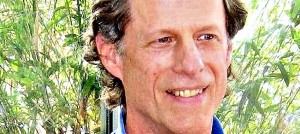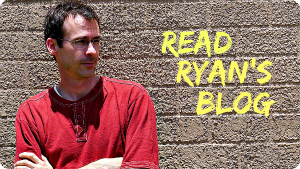John shares a five-step sequence for appropriately meeting babies, including skills from perinatal psychology, craniosacral therapy, and polarity therapy.
There is a strong tradition and justification for therapy sessions with newborn babies.
A main inspiration is Robert Fulford, D.O.
Books:
Dr. Fulford's Touch of Life: The Healing Power of the Natural Life Force – Robert Fulford, D.O. – Gallery Books
Are We on the Path ?– Robert Fulford – Cranial Press
Robert Fulford, D.O. and the Philosopher Physician– Zachary Comeaux – Eastland Press
Mentioned by Andrew Weil in Spontaneous Healing : How to Discover and Embrace Your Body's Natural Ability to Maintain and Heal Itself
Fulford had good results with many common problems faced by babies. Baby’s problems affect the whole family. Fulford championed cranial base work and ANS health as useful areas for helping babies resolve echoes of the birthing experience. Babies have significant ability to resolve issues when given some support. Fulford helped us see what effective support looks like.
John has been teaching a class about working with babies annually for the last 8 years. The ideas he will lay out today are a summary of what he has incorporated into this class.
He likes Franklyn Sills' Foundations in Craniosacral Biodynamics, Volume Two: The Sentient Embryo, Tissue Intelligence, and Trauma ResolutionIt has several chapters devoted to babies. It is not exactly what John does, but he likes it overall.
Other Books:
Craniosacral Therapy for Babies and Small Children – Ettiene Piersman, North Atlantic Books
Cranial Osteopathy for Infants, Children and Adolescents: A Practical Handbook, 1e -Nicette Sergueef, Churchill Livingstone
Pediatric Manual Medicine: An Osteopathic Approach, 1e – Jane Carreiro, Churchill Livingstone
Craniosacral Therapy for Children: Treatments for Expecting Mothers, Babies, and Children – Daniel Agustoni, North Atlantic Books
Ray Castellino – Santa Barbara – clinic pioneered recognition and conversation skills. www.castellinotraining.com
Carrie Contey PhD
www.carriecontey.com
APPPAH – Association for Prenatal and Perinatal Psychology and Health
www.birthpsychology.com
Dave Paxson
www.facebook.com/davepaxson
Many people feel daunted by working with babies, but a little goes a long way and it is better to go ahead and start. There are babies right now who could use your help! Changes made now have a lot of leverage in the life of the child and happiness of the family system.
Armed with only a few steps and some basic knowledge, you can be of significant help. Try it out.
John’s 5 step sequence for working with babies:
Can be useful for many different issues and employed at varying depths.
1) Recognition – we suffer as a culture from over-scientification of ourselves. This misses the reality of the baby’s identity as a newly arriving soul into our realm. This can be approached in a secular manner, with only an acknowledgement that there is an invisible world out there that is not understood by science. Religion or mysticism is not required to work with John’s ideas, just an acknowledgement that the therapist be comfortable with the idea that we cannot measure all of reality, as much of it is invisible.
We need to recognize the baby. A formula for recognition:
- “I know who you are.”
- “I know where you came from.”
- “I know why you are here.”
Look baby in the eye with appropriate proximity he/she would have with mom’s eyes (8-12 inches or so) and recognize:
“I know who you are” – a unit of consciousness from another sphere.
“I know where you came from” – the invisible world.
“I know why you are here” – to encounter the resistance of matter for the fulfillment of consciousness.
Recognition alone may bring about positive changes.
2) Tidal Movement
From Craniosacral Biodynamics – simply palpating the Tide seems to stabilize the system, and recognize baby on another level of embodiment. It can be done anywhere on the body. May have one hand on baby, one hand on mom. Babies may have inhibition of the downward phase (primary exhalation). Our culture contributes to this. We need to be more conscious of caring for the autonomic nervous systems of babies. They are mostly oriented to the social nervous system, and have limited defaulting to sympathetic arousal modes. If that fails, they go into parasympathetic shock and enter a shut down, numbed out, spaced out. We call these babies “good babies” (!)
Helping mom is a high order priority for working with babies. Helping her relationship with her husband can be beneficial to the family system, and baby can slide into a healthier ANS state embodied by the parents.
3) Cranial Base Disengagement
Address the strain in the system introduced by natural processes or unnatural interventions. All of the different factors seem to settle in the cranial base (occiput/sphenoid/temporal). Vagus nerve passes through the Jugular foramen in the cranial base. This is a good place to start. A basic way to work with this is light contact on the occiput behind the ears. It does not need to be precise. Hold an intention of space for the system as an inherent emerging principle. Try to establish better range of motion in the cranial base. This often helps with nursing.
4) Birth Story
This does not need to be told “over” the baby. Work with the baby to review the way birth was supposed to be in order to help the body resolve urges for fulfillment. John will give more examples in the book. Too often in therapy the emphasis is on fixing what was bad. We should emphasize resources first. Revisiting stages of birth is done with intention and physical contact. Some resistance followed by release, at feet, shoulders, head, finding way to optimum. It is always good to conclude with baby moving to mom.
5) Polarity Two-Chair Method
Developed by Robert Hall M.D., a student of Fritz Perls, Randolph Stone, and Ida Rolf. John holds the baby and lets mom have a conversation with the baby. John does “Body, Low, Slow, Loop” with mom (a practice from Chapter 9 of John’s book Dancing with Yin and Yang
and presented in the next Craniosacral Podcast Episode) to settle mom and then imagine the baby is in the empty chair. Mom is asked to speak to the baby, and even ask questions. Revelation often emerges. Mom is asked to be the baby and even more insight arises. Mom accesses her intuitive information. Issues of the estranged father, if important, can also be addressed. Dad is often left hanging when baby arrives. It is good for the baby if mom and dad can work some of that out (chapter 11 of Dancing with Yin and Yang.)
This is a low-pressure form of therapy, much of the above approach can be done non-verbally.
Follow baby’s gestures. They have meaning!
Our whole healthcare system would benefit greatly from spending more time understanding the state of consciousness of babies and really bringing that understanding into clinical work. The medicalization and scientification of birth overlooks some very important factors. At least we could administer some of our interventions with a higher degree of sensitivity to the baby’s needs. Our insensitivity can contribute to many problems later in life for individuals.
John likes William Emerson’s work (www.emersonbirthrx.com), but is not a fan of cathartic methods when working with babies. The baby is not excessively activated during the interaction in his sequence. Looping and pendulation (Peter Levine) is a more skillful way of working. We are always looking for signs of the social nervous system coming back on line
Stephen Porges – triune nervous system
www.stephenporges.com
Video about Dr. Fulford, with Andrew Weil:
An interview I did with John in 2014 where I ask him about his personal biography:





